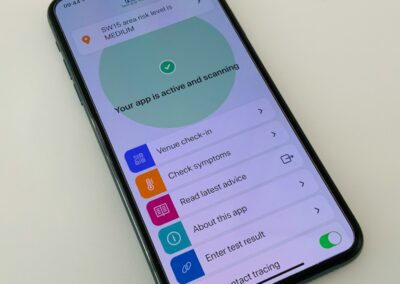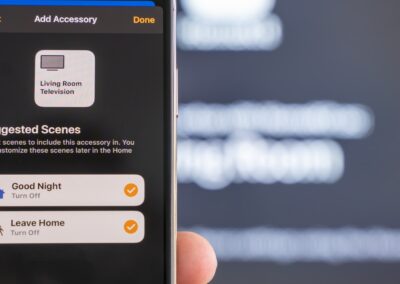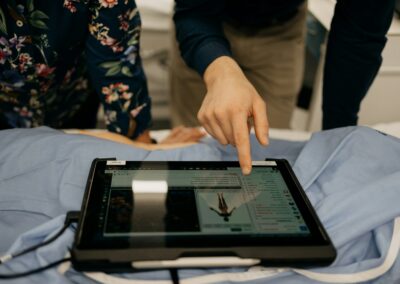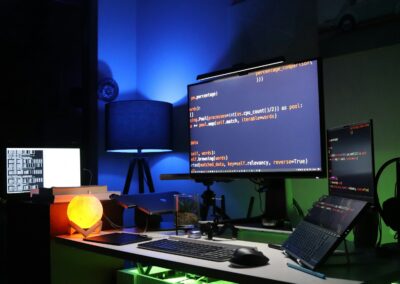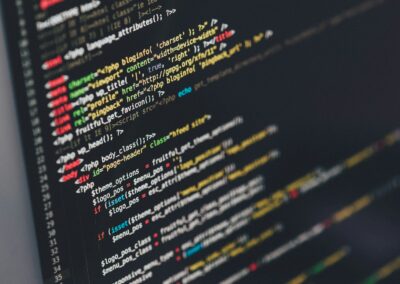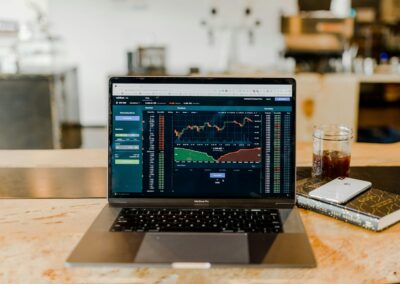Leveraging Digital Twins for Effective Risk Management
Understanding Digital Twins and Their Role in Industry
The concept of digital twins is transforming industries by enabling the simulation of complex systems for risk assessment and mitigation. A digital twin is a virtual replica of a physical object, system, or process, created using data collected from sensors and other sources. This digital counterpart allows for real-time monitoring and analysis, providing insights that are invaluable for predicting and managing potential risks. In regions like Saudi Arabia and the UAE, where technological innovation is a cornerstone of economic growth, the adoption of digital twins is becoming increasingly prevalent.
Digital twins are used across various industries, including manufacturing, healthcare, and urban planning. In manufacturing, digital twins can simulate production processes to identify potential bottlenecks and optimize efficiency. In healthcare, they can model patient conditions and treatment outcomes, enhancing personalized care. In urban planning, digital twins of cities can help in designing sustainable infrastructures and managing resources effectively. The ability to simulate and analyze complex systems in a virtual environment significantly reduces the risks associated with physical prototypes and real-world trials.
In the business context, digital twins offer a strategic advantage by providing a detailed understanding of operations. This understanding helps executives and managers make informed decisions, enhance operational efficiency, and improve overall business performance. The integration of artificial intelligence (AI) and machine learning further enhances the capabilities of digital twins, making them a critical tool for modern businesses aiming for innovation and excellence.
Implementing Digital Twins for Risk Assessment
The implementation of digital twins in risk assessment involves several key steps, including data collection, model creation, simulation, and analysis. The process begins with collecting accurate and comprehensive data from the physical system or process. This data is then used to create a digital model that accurately reflects the physical counterpart. The model is continuously updated with real-time data, ensuring that it remains a true representation of the physical system.
Once the digital twin is created, it can be used to simulate various scenarios and assess potential risks. For instance, in the oil and gas industry, digital twins can simulate drilling operations to predict equipment failures and optimize maintenance schedules. In the financial sector, they can model market behaviors and assess the impact of economic changes on investment portfolios. By simulating different scenarios, organizations can identify potential risks and develop strategies to mitigate them.
In regions like Riyadh and Dubai, where economic development is closely tied to large-scale projects and investments, the use of digital twins for risk assessment is particularly beneficial. These cities are leveraging digital twin technology to enhance the planning and management of infrastructure projects, ensuring that they are completed on time and within budget. The ability to anticipate and address potential issues before they occur significantly reduces the risk of project delays and cost overruns, contributing to the overall success of these initiatives.
The Future of Digital Twins in Risk Management
The future of digital twins in risk management is promising, with advancements in technology continually expanding their capabilities. The integration of blockchain technology, for example, can enhance the security and transparency of data used in digital twins, ensuring that it is tamper-proof and reliable. Additionally, the use of generative artificial intelligence (AI) can enable digital twins to automatically generate and test multiple scenarios, providing more comprehensive risk assessments.
In the context of executive coaching services, digital twins can simulate different leadership styles and management approaches, helping leaders understand the potential impact of their decisions on organizational performance. This application of digital twins can enhance leadership and management skills, enabling executives to make better-informed decisions and drive business success.
In Saudi Arabia and the UAE, where there is a strong focus on technological innovation and economic diversification, the adoption of digital twins is expected to continue growing. These countries are investing heavily in smart city initiatives and digital transformation projects, positioning themselves as leaders in the use of cutting-edge technologies. By embracing digital twins, they can enhance their ability to manage risks, optimize operations, and achieve sustainable growth.
Conclusion: Embracing Digital Twins for a Safer Future
Digital twins represent a significant advancement in risk assessment and management, offering the ability to simulate and analyze complex systems in real time. By providing detailed insights into potential risks and enabling proactive mitigation strategies, digital twins are revolutionizing industries and contributing to business success. In regions like Saudi Arabia and the UAE, the adoption of digital twins is driving technological innovation and economic growth, positioning these countries as leaders in the digital age.
As digital twin technology continues to evolve, its applications will expand, offering even more powerful tools for risk assessment and management. By embracing this technology, businesses can enhance their resilience, optimize their operations, and achieve greater success in an increasingly complex and dynamic world.
—
#DigitalTwins #RiskAssessment #SimulationTechnology #ComplexSystems #SaudiArabia #UAE #Riyadh #Dubai #ArtificialIntelligence #BusinessSuccess #LeadershipSkills #ProjectManagement


